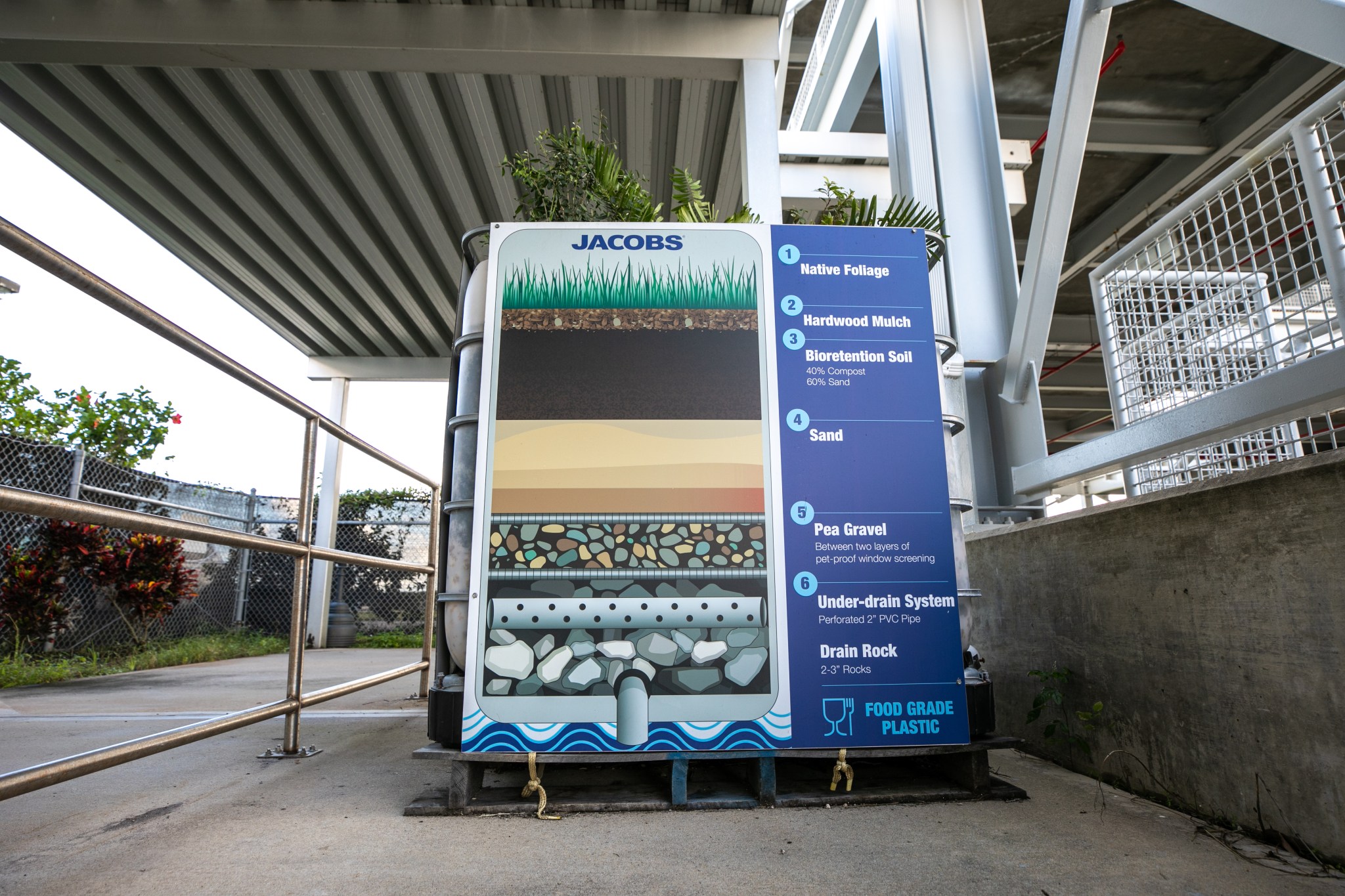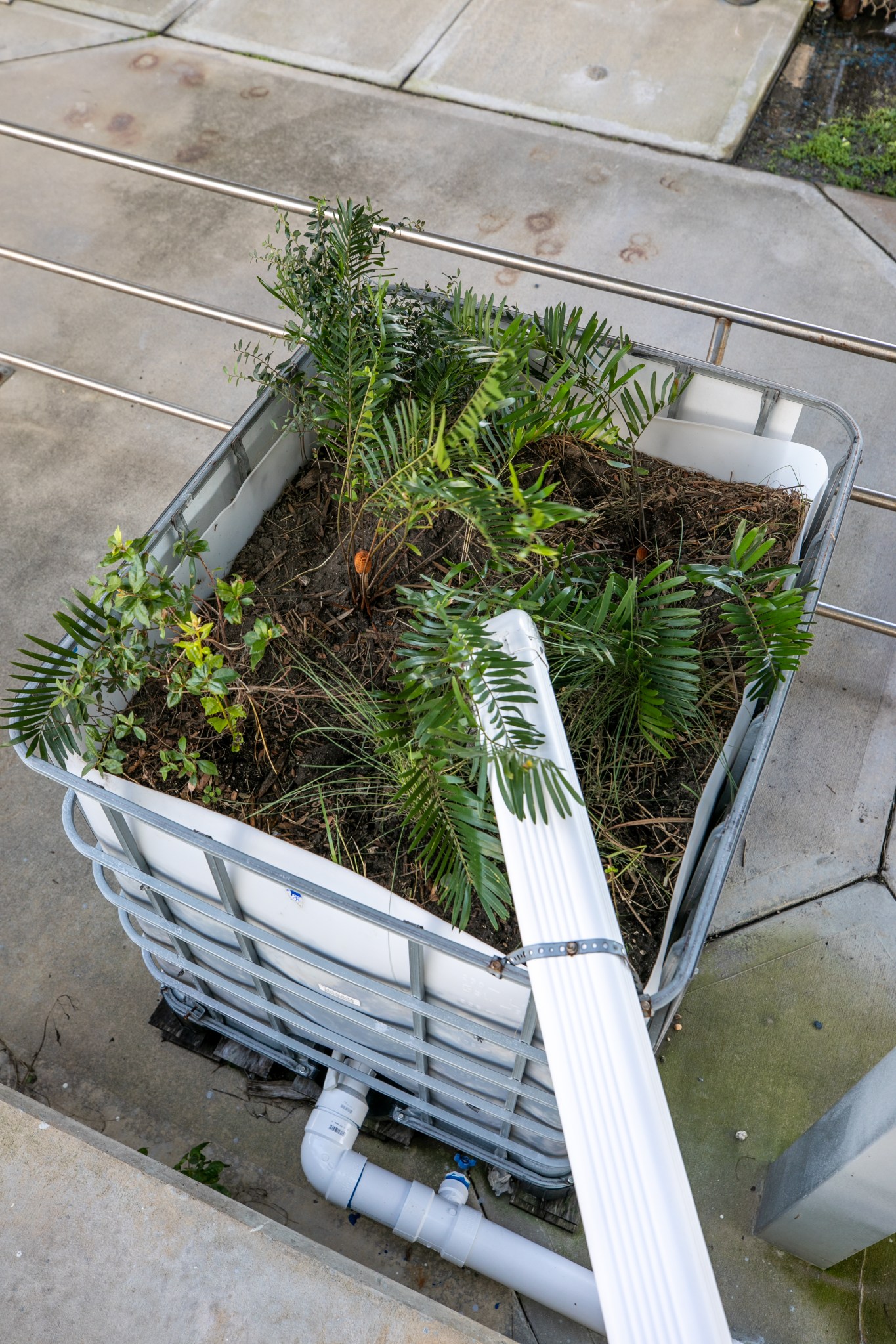
By Danielle Sempsrott
NASA’s Kennedy Space Center
One recent study has led teams at NASA’s Kennedy Space Center to construct an innovative bio-filter system to help minimize rainwater runoff effects on the over 1,000 species of plants, 117 species of fish, 68 amphibians and reptiles, 330 birds, and 31 different mammals that share the Merritt Island National Wildlife Refuge and nearby Indian River Lagoon.
Kennedy places a heavy emphasis on sustainability, continually looking for different ways it can protect Florida’s native fauna, wildlife, and waterways while furthering NASA’s mission and goals.
The project considered how to mitigate the effects of rainwater runoff from galvanized roofs, which may carry zinc into the lagoon and have serious effects on fish and other aquatic life. The metal roofs that top many Kennedy facilities contain a coating of zinc to help protect the metal from rust or corrosion.
A previous employee with Jacobs constructed the bio-filter from layered rock, soil, and native plants to filter and test the water coming off the Launch Complex 39 Observation Gantry, a location selected because of its proximity to the waterline.
“This big dirt and plant structure catches the water running off the galvanized roofs, and the zinc binds to the natural plants as the water filters through so that when it comes out the bottom of the filter, the water is safe to go in the lagoon,” said Jacobs Environmental Scientist An Huynh.

After the bio-filter was installed in 2018, Huynh and fellow environmental scientist April Smith were brought on board to begin gathering samples and testing the quality of the filtered water. Also instrumental in developing the sampling plan and reviewing the data was Yasmin Palmer.
Between July 24 and Dec. 5, 2019, the team collected 20 samples of rainwater as it left the bio-filter. During that time, they found there was, on average, a 65 percent decrease in zinc. It is yet unknown whether, after a certain period of time, the plants stop filtering the water. When the zinc attaches to the plants, it gets absorbed in the plants’ stems and leaves as they continue to grow. To find out the answer to this question, Huynh said they’ll have to do more testing.
Some other things Huynh and Smith plan to study are whether roof age or paint has an effect on the amount of zinc found in the runoff, as well as whether the total percentage of zinc found in the lagoon decreases overall with this bio-filter now in place.
Many sustainability projects at Kennedy, such as this one, receive funding from money the Florida spaceport receives for its recycling efforts. Sustainability Specialist Jeanne Ryba noted the funding first pays for Kennedy’s recycling contract, with any leftover money used for special projects selected through an application process.
The $2,500 Huynh and Smith received for their project was used to purchase the intermediate bulk container where the bio-filter contents are kept, as well as bottles for sampling, underdrain piping that diverted the water into those bottles, and exterior wood paneling for aesthetic purposes.
The plants within the bio-filter were donated by Delaware North – the concessionaire who runs the Kennedy Space Center Visitor Complex. While conducting bus tours, Delaware North also uses this bio-filter as a tool to teach visitors about small and inexpensive ways eco-friendly initiatives can be implemented in their own environments.
Huynh and Smith mentioned they would like to see more of these at other facilities around Kennedy, and they believe future iterations of the bio-filter could be constructed for even less. If they’re able to find bulk containers they can reuse, they would only have to purchase the plants, rocks, soil and, if they decide to continue sampling, the necessary material for testing.
These new constructions wouldn’t need aesthetically pleasing additions such as the wood paneling or signage seen around the current bio-filter but, depending on where they’re placed, some drains might need modifications to ensure the water is draining directly into the bulk container. Also, other structures might not need to be as large and, therefore, could use smaller containers.
“We are always looking for ways to improve the health of the Indian River Lagoon,” Smith said. “I feel like it’s our responsibility to think outside of the box and show some different ways people from all over can contribute to that effort. And this bio-filter concept can be a great, inexpensive way to enact change.”




























